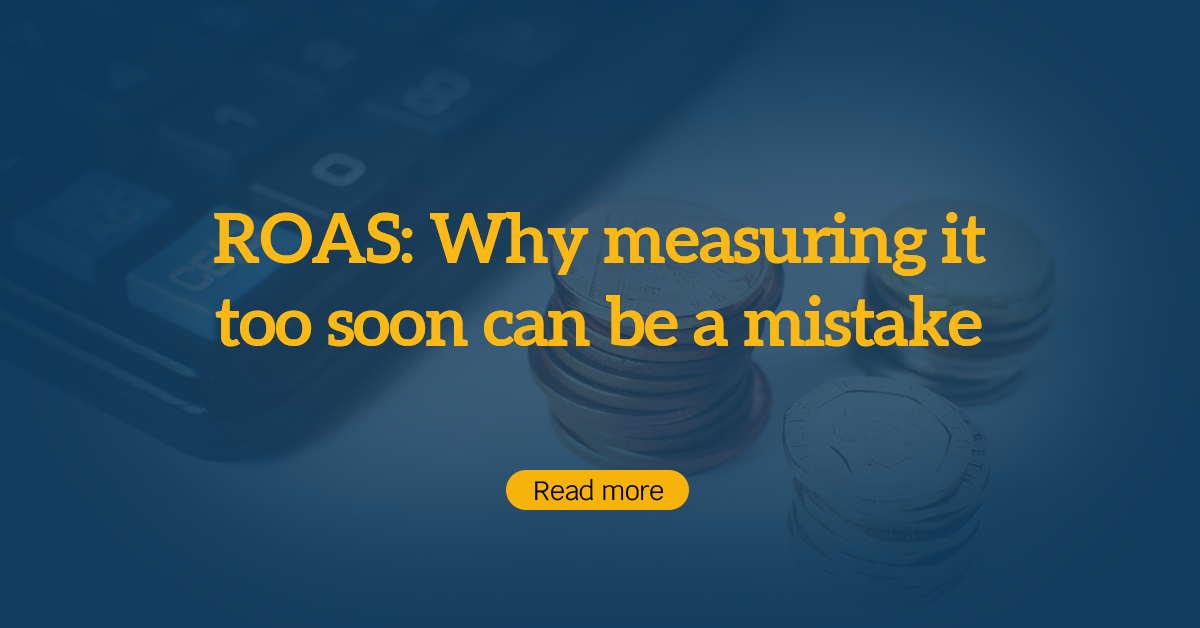We have this app in our portfolio that rocks big time on user acquisition. Most of the traction is organic, but we also invest in paid acquisition. Some time ago we decided it was time to launch a couple of purchase oriented campaigns. In this context, we decided to focus on measuring ROAS and pay closer attention to the return on ad spend (ROAS).
Now… we’ve done this before. We know that…
When you’re able to measure return on ad spend from the beginning, that’s the exception, not the rule
But… we were in love with the product. Users loved it, we loved it, so we thought: it could work for us, right? 🙂
So, when the weeks passed by and we didn’t see a positive ROAS, what do you think we did? We started optimizing. Again. And again. And again.
Luckily for us, that only lasted a few days..
Then we decided to…
Take a step back and look at the big picture for measuring ROAS the right way
The mobile app campaigns were performing well and they were still learning. CTR was reasonable, the audience targeting was on point, feedback on ads was great. Metrics looked good.
The only thing that didn’t look the way we expected it to was the return on ad spend.
The question was, why?
Because it was too soon to measure ROAS
How we realized it was too soon
- When running a purchase-oriented campaign, it’s a standard best practice to wait at least a couple of months until measuring the return on ad spend. But we were too in love to see the obvious.
- If the sales cycle takes a couple of weeks or even a couple of months, it’s unreasonable to think that advertising campaigns will perform any differently. So we compared the sales cycle and the timeframe when campaigns started to be on positive ROAS and things clicked into place.
- We started to analyze the campaigns mostly for their lifetime performance. So when we noticed significant drops in the previous 7-14 days, we didn’t perform dramatic optimizations. We looked at the campaign’s lifetime performance instead. This way, even if the past few weeks weren’t exceptional, the overall performance was still good, and things would recalibrate shortly.
So, next time you’re trying to measure the ROI on your ad spend, make sure you’re not measuring too soon before switching off a campaign. You might be making a mistake.
Thanks for reading! I hope it helped.
Gabriela
P.S. While researching for this situation, we stumbled upon some great articles that explained the importance of focusing on the payback period, rather than ROAS, when it comes to mobile apps. As soon as we get a better grasp on this, we promise we’ll share.

